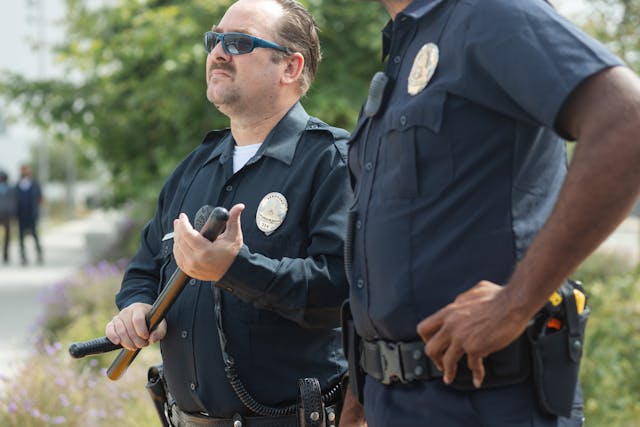In the ever-evolving landscape of law enforcement, tools and tactics must adapt to meet new challenges. Among the most iconic and enduring tools is the police baton. Despite advancements in technology and the introduction of less-lethal alternatives like tasers and pepper spray, the baton remains a staple in the arsenal of modern policing. Its simplicity, versatility, and effectiveness make it an indispensable tool for maintaining order and ensuring officer safety.
 The primary role of a police baton is to provide officers with a non-lethal means of controlling situations. Whether it’s dispersing a crowd, restraining a suspect, or defending against an attack, the baton offers a level of control that is difficult to achieve with other tools. Its design has evolved over the years, with modern versions like the expandable baton offering compactness and ease of carry without compromising on functionality.
The primary role of a police baton is to provide officers with a non-lethal means of controlling situations. Whether it’s dispersing a crowd, restraining a suspect, or defending against an attack, the baton offers a level of control that is difficult to achieve with other tools. Its design has evolved over the years, with modern versions like the expandable baton offering compactness and ease of carry without compromising on functionality.
Versatility in the Field
One of the key reasons for the baton’s enduring popularity is its versatility. Unlike specialized tools that serve a single purpose, the baton can be used in a variety of scenarios. For instance, it can be employed to break glass in emergencies, create distance between an officer and a suspect, or even as a deterrent when displayed prominently. This adaptability makes it a valuable tool for officers who must be prepared for unpredictable situations.
Another advantage is the psychological impact of the baton. The mere presence of a baton can de-escalate a situation, as it signals an officer’s readiness to enforce the law. This can prevent conflicts from escalating, reducing the need for physical intervention. However, when force is necessary, the baton provides a controlled and measured response, minimizing the risk of serious injury.
Training and Proper Use
Effective use of a police baton requires proper training. Officers must learn not only how to wield the baton but also when and where to use it. Training programs emphasize techniques that maximize effectiveness while minimizing harm, ensuring that the baton is used responsibly. This focus on training underscores the importance of the baton as a tool for de-escalation and control rather than aggression.
Modern batons, such as the expandable models, are designed with user safety in mind. They are lightweight, easy to deploy, and can be carried discreetly, making them ideal for everyday use. Additionally, their collapsible design reduces the risk of accidental injury to the officer or bystanders.
Legal and Ethical Considerations
The use of police batons is subject to strict legal and ethical guidelines. Officers must justify their use of force, ensuring that it is proportionate to the threat faced. This accountability is crucial in maintaining public trust and upholding the principles of justice. The baton’s non-lethal nature makes it a preferred option in situations where lethal force is unnecessary, aligning with the broader goal of preserving life while maintaining order.
Despite the rise of advanced technologies, the police baton remains a symbol of authority and a practical tool for law enforcement. Its simplicity, effectiveness, and versatility ensure that it will continue to play a vital role in modern policing. For those interested in exploring high-quality batons, the expandable baton EXB21N from Dekkade offers a reliable and innovative solution designed to meet the demands of today’s law enforcement professionals.
